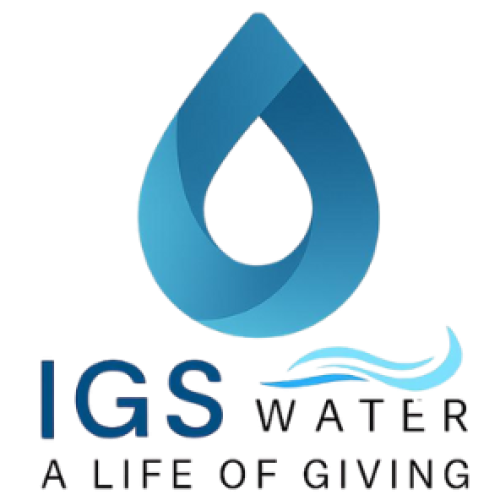When discussing water quality, one factor consistently stands out as the most important indicator of a thriving aquatic environment: dissolved oxygen. It is the silent driver behind every healthy water ecosystem, from ponds and lakes to aquaculture facilities and irrigation systems. Without sufficient dissolved oxygen, even the most well-maintained water body can quickly fall into imbalance, leading to algae blooms, foul odor, struggling aquatic life, and a decline in overall water health.
At IGS Water, dissolved oxygen is at the center of our water treatment philosophy. We understand that restoring and maintaining oxygen levels is the foundation for creating self-sustaining, clean, and biologically balanced water systems.
What Is Dissolved Oxygen?
Dissolved oxygen (DO) refers to the oxygen molecules naturally present in water. It comes from the atmosphere, photosynthesis by aquatic plants, and mechanical processes such as aeration. DO is essential because it fuels nearly all biological activities in water ecosystems, from fish respiration to microbial decomposition.
Healthy water bodies maintain stable dissolved oxygen levels, but this balance can easily be disrupted by temperature changes, pollution, organic waste buildup, or stagnant water flow.
Why Dissolved Oxygen Matters
1. Essential for Aquatic Life
Fish, crustaceans, and beneficial microbes rely on dissolved oxygen to survive. Low DO levels lead to stress, reduced immunity, slow growth, or sudden fish kills. In contrast, well-oxygenated water supports active, healthy aquatic life and stable food chains.
2. Supports Natural Decomposition
Beneficial aerobic bacteria break down organic waste such as fish waste, leaves, sludge, and excess nutrients. They work efficiently only when oxygen is available. Without enough DO, decomposition slows dramatically, causing sludge accumulation, poor water clarity, and nutrient overload.
3. Prevents Algae Overgrowth
Algae thrive when oxygen levels drop, nutrients concentrate, and water becomes stagnant. High DO levels, combined with good circulation, disrupt algae formation and encourage beneficial bacteria to dominate instead.
4. Controls Odors and Harmful Compounds
Oxygen-poor conditions trigger anaerobic activity, which produces ammonia, methane, and hydrogen sulfide. These gases create foul smells and indicate unhealthy water. Adequate DO keeps these compounds in check and maintains a fresh, clean environment.
5. Stabilizes Water Chemistry
Balanced dissolved oxygen supports stable pH levels, reduces harmful byproducts, and limits the presence of toxic substances. This creates an ecosystem that can naturally regulate itself without constant chemical treatment.
Factors That Reduce Dissolved Oxygen
Even naturally clean ponds can experience DO decline due to:
- Warm temperatures
- High organic load
- Excess feeding in aquaculture
- Overgrowth of algae
- Poor circulation or stagnation
- Accumulated sludge
- Low sunlight penetration
- Excess nutrients from runoff
Once DO drops, the entire water body becomes vulnerable to rapid deterioration.
How IGS Water Helps Maintain Healthy Dissolved Oxygen Levels
IGS Water offers advanced solutions that directly improve dissolved oxygen and overall water quality. Our systems are designed to revive oxygen levels quickly and maintain them consistently.
1. Nanobubble Technology
Our nanobubble generators infuse ultra-fine oxygen bubbles that remain suspended in the water for long periods instead of rising to the surface and escaping. These nanobubbles penetrate deep zones, increase DO levels significantly, break down organic waste, and suppress harmful microorganisms. This method improves both water clarity and long-term ecosystem stability.
2. Pond Aeration and Destratification Systems
Stratification is one of the biggest enemies of dissolved oxygen. Warm water stays at the top, while cold oxygen-deficient water remains at the bottom, creating dead zones. IGS destratification systems continuously circulate and oxygenate the entire water column, eliminating stagnant pockets and ensuring DO is evenly distributed from top to bottom.
3. Low-Maintenance, High-Efficiency Water Revitalization
IGS systems are built to operate with minimal maintenance, even in water bodies with high sediment, sludge, or solids. Their design prevents clogging and ensures continuous, reliable oxygenation without excessive energy consumption.
The Impact of Healthy Dissolved Oxygen Levels
When dissolved oxygen is restored and maintained, the transformation is visible and long-lasting:
- Water becomes clearer and cleaner
- Fish and aquatic life thrive
- Algae blooms decline naturally
- Sludge breaks down faster
- Odors disappear
- Harmful gases do not accumulate
- Beneficial bacteria remain active
- The entire ecosystem becomes balanced and self-sustaining
This is why DO is not just a metric — it is the foundation of water health.
Dissolved Oxygen: The Core of Every Healthy Water Body
Healthy water ecosystems depend on dissolved oxygen to function properly. It influences every physical, chemical, and biological process happening below the surface. Without sufficient oxygen, no water treatment method can create permanent, stable results.
IGS Water focuses on solutions that enrich, stabilize, and maximize dissolved oxygen levels to restore life and balance in ponds, lakes, farms, and industrial water systems. Our technologies ensure that water remains oxygen-rich, clean, and thriving regardless of environmental conditions.
If your water is experiencing algae growth, odor, fish stress, or poor clarity, improving dissolved oxygen is the most effective first step — and we are here to help.

